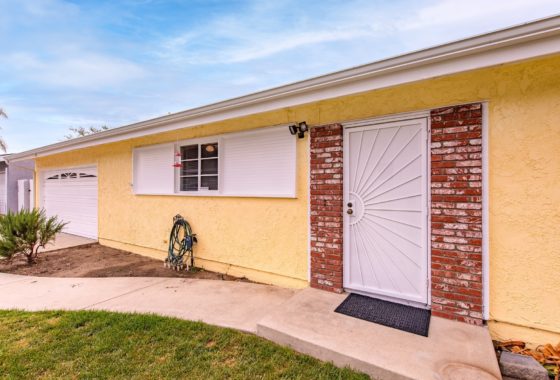 During the last several years we have lived through a Real Estate Boom, unlike most have ever seen. Simi Valley Housing prices were rising at double digit rates year by year. Homes sold with multiple offers in days and Sellers had the upper hand in 99% of the negotiations. Fast forward to today and most of us ask what happened?
During the last several years we have lived through a Real Estate Boom, unlike most have ever seen. Simi Valley Housing prices were rising at double digit rates year by year. Homes sold with multiple offers in days and Sellers had the upper hand in 99% of the negotiations. Fast forward to today and most of us ask what happened?
George Clooney starred in the film The Perfect Storm (2000), which is the story of the crew and the disappearance of the fishing boat, the Andrea Gail. The Andrea Gail launches out and has an epic swordfish catch. These seasoned commercial fishing veterans navigated those seas before and were experienced in working in very hostile conditions. The difference this time as opposed to all the other times they went fishing was that this event could only happen under very particular conditions and the probability for these conditions to converge simultaneously was historically rare.
Alright where the Real Estate Connection? In 1991 three storm fronts converged and created the disastrous storm off Massachusetts that claimed the Andrea Gail. Similarly, over the last several years 4 conditions converged and hit Southern California that caused the real estate market to erupt into a storm. These four conditions were:
- Low home prices
- Good income to home price ratio (Affordability)
- Low Interest rates
- Loosening of Loan qualification requirements
Home Prices – The recession of the early 1990s combined with our local economy created very low home prices. When the Berlin Wall came down, defense contracts dried up which impacted Simi Valleyand the San Fernando Valley with many lost jobs. While this was happening the Northridge Earthquake hit further affecting the prices of homes in the San Fernando and Simi Valley areas. Simi Valley’s depressed Real Estate Market was created in part by these unique conditions.
Income to home price ratio – During the mid to late 1990s inflation was extremely low. The Consumer Price Index was moving at a snail’s pace. Jobs began to recover, incomes were increasing and our depressed real estate market made homes very affordable under these conditions.
Interest Rates – As the 1990s came to a close 30 year mortgage rates were dropping. As mortgages pushed to 7.0% and lower, a typical buyer’s monthly payment was now lower on larger loan amounts, which meant that buyers could pay more if competing with other buyers for the same property. Lower payments created opportunity which led to increasing competition for homes available for sale.
Loosening of Loan qualification requirements – Lenders began to change their qualification standards. 100% financing, fewer income documentation requirements, and lower credit requirements brought even more buyers to market.
The overall effect of the above conditions made money cheap which meant payments went farther. Cheap money created a large pool of buyers, a large enough pool that began to outweigh the available inventory. This cheap money and low inventory made bold buyers; bold enough to bid over asking prices for homes. As interest rates dropped into the 5.0% range and just about anyone could qualify for a loan; the prices of homes shot up at unprecedented double digit rates. Soon inexperienced people looked like real estate tycoons as they rode the wave. What was to come was inevitable; inevitable, because at some point, the potential buyer’s monthly payment to income ratio would eventually become unsustainable.
This unsustainable ratio is where we are today. The income to monthly payment ratio is no longer in sync. Affordability has been jeopardized today due to the rapid increase in home prices and the slower moving increase in incomes. Consider that the price of gasoline, eggs, milk and other goods has doubled in this time, the income-affordability ratio is impacted to a greater extent.
Additionally the four conditions of The Perfect Real Estate Storm resulted in over 20% of all buyers using 100% financing. In the first time home buyer category, 40% of the purchases were with 100% financing. This made sense to many borrowers as they figured their home would increase in value as much as 20% and they could either sell and capture a profit or refinance into a better loan with this new gifted equity.
Almost in reverse order outlined above, lending requirements are no longer loose, but very strict. Many buyers who once qualified for loans (they should have never been qualified for) have been knocked out of the market.
Considering most first time buyers do not have large reserves or down payments, these tighter lending practices will make it more difficult for buyers to obtain financing. Even in the move-up market, sellers in 2006 and 2007 do not have enough equity from the sale of their existing home to afford the down payment on a move up without having to look to savings to make up the difference. Keep in mind that the U.S. Commerce Department’s Bureau of Economic Analysis dished out some discouraging news recently, saying that Americans spent more than they earned in 2005 more specifically a negative savings rate of 0.5 percent for the year. This is the first time that this has happened since the Great Depression.
The low savings rate and the lower equity available for move-up buyers were resulting in Jumbo mortgages on almost 50% of every purchase. In areas like Simi Valley, FHA lending has increased the conforming rate limit to $729,00 but with only a 3% down payment required sellers now have to be concerned that the monthly payments on these larger mortgages are affordable to their prospective buyers.
Those waiting around for the fast paced biding wars of a few years ago will be in for a long wait. The Bear Sterns collapse is an indicator that this is not over just yet.
So why all the bad news? Well this is not bad news, I’m giving you the facts and if you plan on selling your home in these market conditions you need to be armed with the facts so you can make the proper decisions. The question I have is who will you choose to be the captian in your wheelhouse during these turbulent times.?

[…] Valley Home Buying Guide for 2008 As an adjunct to my Perfect Storm Blog post. I went to NAR’s website and looked at the historical sales data, to study the trends as I am […]